Sabriyyabromley
On this page, you find all documents, package deals, and flashcards offered by seller sabriyyabromley.
- 6
- 0
- 1
Community
- Followers
- Following
7 items
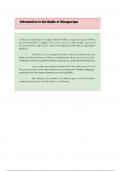
The Battle of Albuquerque
The Battle of Albuquerque, fought on April 8–9, 1862, was a skirmish in the New Mexico Territory during the American Civil War. Union forces, led by Colonel Edward Canby, clashed with Confederate troops under Colonel Henry Hopkins Sibley in an attempt to disrupt Confederate control in the region. The confrontation took place along the Rio Grande, where Union soldiers used guerrilla tactics to harass the Confederates without engaging in a full-scale battle. Although tactically inconclusive, the...
- Class notes
- • 6 pages •
The Battle of Albuquerque, fought on April 8–9, 1862, was a skirmish in the New Mexico Territory during the American Civil War. Union forces, led by Colonel Edward Canby, clashed with Confederate troops under Colonel Henry Hopkins Sibley in an attempt to disrupt Confederate control in the region. The confrontation took place along the Rio Grande, where Union soldiers used guerrilla tactics to harass the Confederates without engaging in a full-scale battle. Although tactically inconclusive, the...
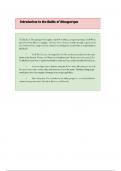
The Battle of Albuquerque
The Battle of Albuquerque, fought on April 8–9, 1862, was a skirmish in the New Mexico Territory during the American Civil War. Union forces, led by Colonel Edward Canby, clashed with Confederate troops under Colonel Henry Hopkins Sibley in an attempt to disrupt Confederate control in the region. The confrontation took place along the Rio Grande, where Union soldiers used guerrilla tactics to harass the Confederates without engaging in a full-scale battle. Although tactically inconclusive, the...
- Class notes
- • 6 pages •
The Battle of Albuquerque, fought on April 8–9, 1862, was a skirmish in the New Mexico Territory during the American Civil War. Union forces, led by Colonel Edward Canby, clashed with Confederate troops under Colonel Henry Hopkins Sibley in an attempt to disrupt Confederate control in the region. The confrontation took place along the Rio Grande, where Union soldiers used guerrilla tactics to harass the Confederates without engaging in a full-scale battle. Although tactically inconclusive, the...

The Battle of Albuquerque
The Battle of Albuquerque, fought on April 8–9, 1862, was a skirmish in the New Mexico Territory during the American Civil War. Union forces, led by Colonel Edward Canby, clashed with Confederate troops under Colonel Henry Hopkins Sibley in an attempt to disrupt Confederate control in the region. The confrontation took place along the Rio Grande, where Union soldiers used guerrilla tactics to harass the Confederates without engaging in a full-scale battle. Although tactically inconclusive, the...
- Class notes
- • 6 pages •
The Battle of Albuquerque, fought on April 8–9, 1862, was a skirmish in the New Mexico Territory during the American Civil War. Union forces, led by Colonel Edward Canby, clashed with Confederate troops under Colonel Henry Hopkins Sibley in an attempt to disrupt Confederate control in the region. The confrontation took place along the Rio Grande, where Union soldiers used guerrilla tactics to harass the Confederates without engaging in a full-scale battle. Although tactically inconclusive, the...
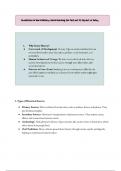
Foundations of World History: Understanding the Past and Its Impact on Today
**Understanding the Past in World History: A Comprehensive Guide** World history offers essential insights into the development of human societies, revealing how cultures, governments, and economies evolved and shaped our present world. This guide covers key aspects of historical study, including why we study history, types of historical sources, and the importance of recognizing change and continuity. It explores the spread of ideas and technologies, the impact of empires and colonialism, an...
- Class notes
- • 3 pages •
**Understanding the Past in World History: A Comprehensive Guide** World history offers essential insights into the development of human societies, revealing how cultures, governments, and economies evolved and shaped our present world. This guide covers key aspects of historical study, including why we study history, types of historical sources, and the importance of recognizing change and continuity. It explores the spread of ideas and technologies, the impact of empires and colonialism, an...
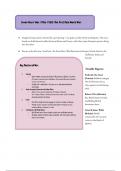
2 pack of World History Notes: Seven Years' War and Thirty Years' War
The Thirty Years' War (1618–1648) was a devastating religious and political conflict in Europe, ending with the Peace of Westphalia, which reshaped diplomacy and sovereignty principles. The Seven Years' War (1756–1763) was a global conflict over colonial and territorial power, ending with the Treaty of Paris, marking Britain as a dominant force a
- Package deal
- • 2 items •
- Sevens Years' War (1756-1763) The First Real World War • Class notes
- Thirty Years' War • Class notes
The Thirty Years' War (1618–1648) was a devastating religious and political conflict in Europe, ending with the Peace of Westphalia, which reshaped diplomacy and sovereignty principles. The Seven Years' War (1756–1763) was a global conflict over colonial and territorial power, ending with the Treaty of Paris, marking Britain as a dominant force a
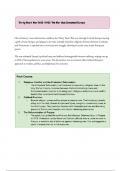
Thirty Years' War
The Thirty Years' War, fought from 1618 to 1648, was one of the most destructive conflicts in European history. Originating as a religious struggle between Catholic and Protestant states in the fragmented Holy Roman Empire, it quickly escalated into a complex political battle involving most of Europe’s major powers. Spanning across Germany, Austria, Bohemia, and beyond, the war became a brutal series of battles, sieges, and famines that decimated entire regions and populations. Key figures ...
- Package deal
- Class notes
- • 5 pages •
The Thirty Years' War, fought from 1618 to 1648, was one of the most destructive conflicts in European history. Originating as a religious struggle between Catholic and Protestant states in the fragmented Holy Roman Empire, it quickly escalated into a complex political battle involving most of Europe’s major powers. Spanning across Germany, Austria, Bohemia, and beyond, the war became a brutal series of battles, sieges, and famines that decimated entire regions and populations. Key figures ...

Sevens Years' War (1756-1763) The First Real World War
We get a sense of the conflict's intensity by breaking down each theater—from Europe’s devastating stalemates to North America’s ferocious land grabs and India’s decisive battles, each arena feels like a world in itself, where crucial victories reshaped entire regions. The war’s main players aren’t just military leaders but figures of legendary status, shaping history through sheer grit and tactical brilliance. The end is bitter and complex: treaties were signed, but no one wal...
- Package deal
- Class notes
- • 4 pages •
We get a sense of the conflict's intensity by breaking down each theater—from Europe’s devastating stalemates to North America’s ferocious land grabs and India’s decisive battles, each arena feels like a world in itself, where crucial victories reshaped entire regions. The war’s main players aren’t just military leaders but figures of legendary status, shaping history through sheer grit and tactical brilliance. The end is bitter and complex: treaties were signed, but no one wal...
